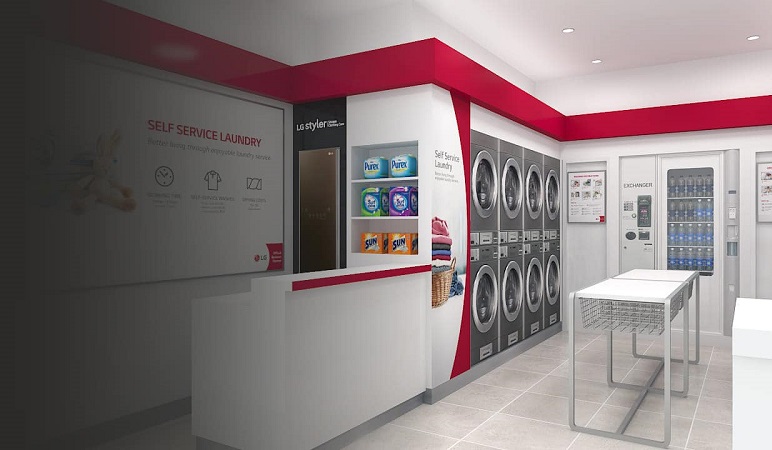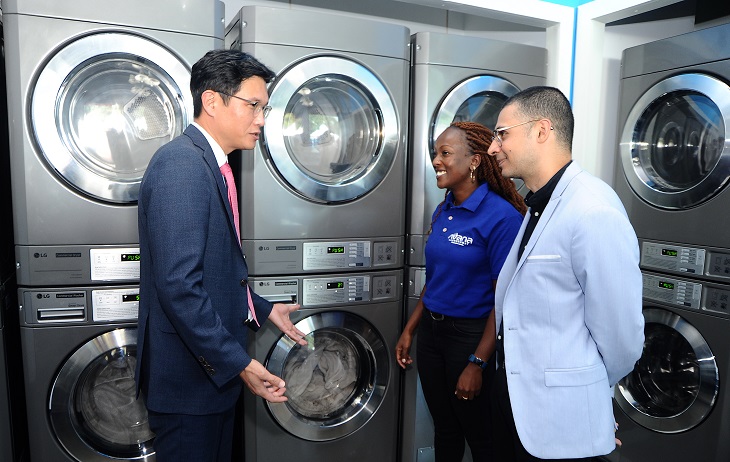Nearly every industry in the world is undergoing a rapid shift, driven by urbanization and changing consumer lifestyles. At the crux of this change is an engine of constant technological innovation that is driving consumer desires and exposing new possibilities across multiple sectors.
As urban centers continue to grow, and their populations get increasingly sophisticated, the demand for convenient, reliable, and hygienic laundry services surges concurrently. The trend is further being supported by the sophistication of laundry service providers as indicated by the uptake of high-tech laundry machines.
In the last three years alone, there have been more than 100 commercial laundry marts springing up in different parts of the country, supported by a collaboration between LG and Hotpoint. The market is projected to grow by 1,000 new professional laundry service providers within the next three years.
Backstopping this expansion is the boom in technology behind the laundry machines. Commercial washers and dryers not only need to clean and dry clothes, but they also need to be energy and water efficient, take up as little space as possible, and be time-effective.
As entrepreneurs open new laundromats, they have to think about the quality of machines they get from their provider. Machines that are engineered with a stackable design to maximise space efficiency are often the darling of the market. Other considerations include reduced noise emissions and vibration.
With customers becoming more particular about their clothes, laundromats also look for machines that feature high-temperature drying to sanitize clothes and eliminate bacteria.
Furthermore, cost-saving is the cornerstone of every business in these tough economic times. Machines that use less detergent, electricity, and water, therefore, do much better in the laundromat market than those that do not.
One of the technologies that sets some manufacturers apart, though, is the smart features that prioritize convenience for both the service provider and the customer. For some machines, users can monitor the progress of their clothes via a mobile app, helping them schedule pick-up and drop-off of their clothes. For operators, the app can provide real-time insights into the machines, enabling proactive maintenance and efficient business management.
The infusion of technology into the laundromat sector is reshaping traditional business models. Entrepreneurs are now adopting hybrid models that combine their physical storefronts with digital platforms, offering services like online booking, mobile payments, and home delivery. This shift caters to the modern consumer who prefers convenience and flexibility.
Beyond business growth, the advancement of laundromats is having a knock-on effect on empowering communities. Projects like the Mamafua Laundromat in Nairobi’s Lang’ata neighborhood are creating jobs for local workers. With the addition of training and capacity building like LG did recently in Nairobi, local communities are increasing their skills, setting them up for gainful employability even further down the line.
There are also numerous opportunities for maintenance technicians and repair personnel. As the number of laundromats grows, so too does the demand for skilled labor to keep the machines humming.
As the country continues to embrace digital transformation, the laundromat industry stands as a testament to how technology can spur growth and revolutionize traditional services. The role of manufacturers of laundry machines lies in innovating to match the rapidly changing consumer needs. This, in turn, helps drive economic growth and fosters community development.
The wave of technological progress is impacting every industry and sector. Entrepreneurs in the laundry sector are already reaping the benefits, with more set to excel over the next few years. The question for all of us is, how are we taking advantage of the rising tide?
Related Content: 1,000 New Laundromats Set for Establishment In Kenya By 2035
By Donghun Lee, the President of LG Electronics East Africa.











